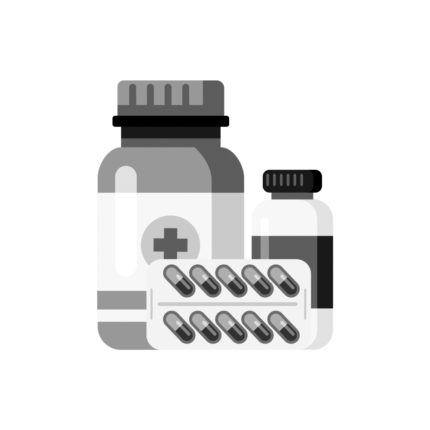Denicol
70.00৳ Drop (5ml)
- Denicol is a combination of Dexamethasone and Chloramphenicol used to treat various eye and ear infections.
- It is indicated for conditions like bacterial conjunctivitis, corneal ulcers, and otitis externa.
- The medication provides anti-inflammatory and antibacterial effects, helping in steroid-responsive ocular inflammation.
- Always use under the guidance of a registered healthcare provider for optimal results.
 Brand
Brand
|
ACI Limited |
|---|---|
 Generics
Generics
|
Dexamethasone + Chloramphenicol |
 Type
Type
|
Ophthalmic Solution |
Indications
Eye: Denicol is prescribed for the treatment of acute purulent conjunctivitis, inflammation of both the superficial and deeper corneal layers, and corneal ulceration. It is also indicated for keratitis disciformis, deep forms of post-herpetic keratitis, allergic conjunctivitis, allergic blepharitis, both acute and chronic iritis, chronic anterior uveitis, as well as corneal injuries caused by chemical, thermal, or radiation burns, or foreign body penetration. Additionally, this combination is effective in treating steroid-responsive inflammatory eye conditions where corticosteroid therapy is necessary and where bacterial infections or risks of infection are present. Denicol may also be used for postoperative inflammation and other ocular inflammation associated with infection.
Ear: Denicol is used in treating otitis externa, otitis media, and chronic suppurative otitis media.
Always consult a registered healthcare provider before use.
Pharmacology
Dexamethasone is a potent glucocorticoid that exerts both anti-inflammatory and anti-allergic effects. It is applied topically to manage inflammatory conditions in the anterior segment of the eye. After oral administration, dexamethasone is absorbed quickly, with a half-life of about 190 minutes. Topical application to the skin or eyes can lead to systemic effects due to its absorption.
Chloramphenicol is a broad-spectrum bacteriostatic antibiotic, effective against both gram-positive and gram-negative bacteria. It works by binding to bacterial ribosomes and preventing the early stages of bacterial protein synthesis.
Dosage & Administration
Eye:
- Bacterial Conjunctivitis: Instill 1–2 drops into the conjunctival sac every 2 hours for the first 2 days. Afterward, use 1–2 drops every 4 hours while awake for the next 5 days.
- Corneal Ulcers: Instill 2 drops every 15 minutes for the first 6 hours, then every 30 minutes for the remainder of the first day. On day 2, instill 2 drops hourly. From days 3 to 14, apply 2 drops every 4 hours. If corneal re-epithelialization is not achieved, treatment may continue beyond 14 days.
Ear: For infections, administer 2 to 3 drops every 2–3 hours initially, then gradually reduce the frequency based on clinical improvement. Avoid stopping the medication prematurely.
Always follow the guidance of a registered healthcare provider.
Interactions
Chloramphenicol may increase the effects of anticoagulants such as warfarin when absorbed through the eye. Its efficacy can be reduced if used simultaneously with Phenobarbital. The effectiveness of dexamethasone may be diminished with the concurrent use of phenytoin, phenobarbitone, ephedrine, or rifampicin.
Contraindications
This combination should not be used in patients with epithelial herpes simplex keratitis, fungal, viral, or tubercular eye infections, or glaucoma. It is contraindicated for those with a history of myelosuppression related to Chloramphenicol, and in individuals who are hypersensitive to Chloramphenicol, Dexamethasone Phosphate, or any component of the formulation.
Side Effects
Chloramphenicol may cause transient ocular discomfort, including stinging, redness, itching, conjunctivitis, foreign body sensation, photophobia, blurred vision, eye dryness, and pain. Allergic reactions are also possible with topical use. Prolonged corticosteroid use can elevate intraocular pressure, potentially leading to glaucoma, optic nerve damage, or posterior subcapsular cataracts.
Pregnancy & Lactation
Due to the lack of sufficient studies, this medication should be used during pregnancy only if the potential benefits outweigh the risks. Caution is advised when administering Chloramphenicol and Dexamethasone ophthalmic solution to nursing mothers.
Precautions & Warnings
Extended corticosteroid use may increase the risk of fungal eye infections. Long-term use can lead to cataract formation and glaucoma, along with optic nerve damage. Regular monitoring of intraocular pressure is recommended. Prolonged use of antibiotics may lead to overgrowth of non-susceptible organisms, including fungi. If new infections develop, discontinue treatment and consider alternative therapies.
Therapeutic Class
Combination ophthalmic steroid-antibiotic preparations.
Storage Conditions
Store in a cool, dry place, away from light. Keep out of the reach of children. Do not use after 30 days from first opening.













Reviews
There are no reviews yet.